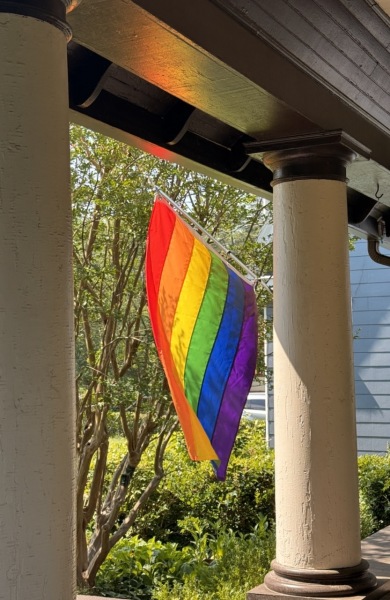Today's adventure was a tour of the town's water system. Valerie had won a bid on this as a church fundraiser – a member of the town water oversight board is also a member of the church and offered such a tour.
The town's first large communal well was dug in the late 1800s as a private enterprise for people in the town center area. The operation was sold to the town some 15-20 years later and has been municipal ever since. Originally, there was no water metering; you paid based on expected usage by counting the number of people in the home and acreage and what you were doing with that acreage. Now we have metering. There are 6 different wells that the town uses in different parts of town, and they have different qualities and so some of them are only run at high summer when there's great demand, because there's a lot of iron and manganese in the earth, and that ends up giving discolored water, which people don't like. The town uses about a million gallons a day in winter and about two million gallons a day on the hottest summer days.
There is an old historic building which was used for the original pumphouse that was recently restored and is now being used as offices and labs. They did a beautiful job on the restoration, saving old rolltop desks and original blueprints and pressure meters, some for decoration, some for actual use. Then for some of the extras, like they needed a large table, so they actually built one out of wood so it would look nice with the historic desks rather than getting some Formica crap.
We then walked over to the construction site of the new PFAS removal plant so we could talk about what it was going to look like, and where the giant tanks for this and that would be. The site is also where the current pumphouse is for one of the wells, so we got to go in, and there was some handwaving of where the pipes go and how they go through a temporary PFAS removal station and then return to have chlorine etc. added. The chlorine tank was not huge, maybe three times as big as my water heater, but I guess you just don't put that much in.
I neglected to take pictures in the pumphouse or of the construction site. But I did take pictures of our next stop, which was down the road a ways, of the newest water tower. On the outside it's just a cylinder; on the inside it's also just a cylinder with a flat ceiling pretty high up. The water is above that ceiling. Hope it doesn't crash down upon us while we are standing inside it! It's fiberglass lined, and has an 18-inch concrete slab as its base. Perry was surprised that there was such a high ceiling and that the water was all the way up there; he expected more volume to be used for storage. But it's really all about water pressure and you need height for that. All of the water towers are targets for cell phone companies to put antennas; the steel ones get antenna bases welded to them, which the water guy was underwhelmed about. The new one has cell phone antenna mounts built in. Which means that they can't add any more beyond the 3-4 that they've got.
The water guy was seemingly thrilled to spend a Saturday afternoon leading people around town, answering all kinds of questions we had, volunteering all kinds of information. Apparently they are having a labor shortage problem because there's some certifications that you need to get in order to work on or supervise water systems, and people aren't getting those certifications. Hopefully they'll be able to hire some more folks soon. They have reqs out.
The big pump at the bottom of the water tower.

The big pipe going up to the top of the water tower.















